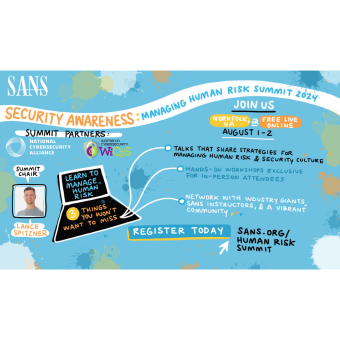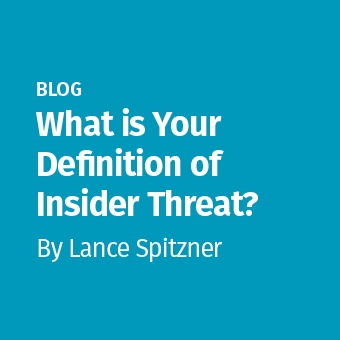Tags:

After releasing what you feel is a great collection of security awareness training campaigns to all your learners, you’re feeling good. You come into work and receive an email from corporate. That beaming sense of accomplishment disappears in an instant. There have been several complaints from your learners, saying that the awareness program you've just released is too difficult to understand or even too offensive for them.
What Happened to your Security Awareness Training Campaign?
Chances are, you didn’t localize your content.
Many companies and organizations help to educate people across the globe, but remember: learners might speak a different language from our own. Projects must be translated into diverse languages to reach out to different audiences, and the work doesn’t stop there… When teaching security awareness across the globe, we also need to be aware that different languages means different cultures. And that’s where localization comes into play.
What’s the Difference between Localization and Translation?

A personified difference between translation and localization is meeting someone visiting from another country versus meeting someone who has lived here for many years. The former may be able to speak your language; they may even have an accent. The latter has learned to adapt to their new culture in addition to learning the language; something that takes a lot more time and effort.
Now, the most measurable difference between translation and localization is when each process begins. Whether a company outsources its translators or just uses Google Translate, the translations, themselves, can be carried out at the end of a project’s development. They are an afterthought to what has already been created for an audience; once you have your words, you can translate them.
Localization, as personified above, is a whole, new monster. The idea of localization is to adjust a project’s entire tone to accommodate every culture you address. Aspects like names, graphics, and colors, for example, should be localized to your audience. Considering these aspects before project development will save a lot of time and money, help keep projects rolling smoothly, and help gain positive reception from your audiences.
Let’s look at each aspect individually:
Naming Names: Awareness Program Characters Count

If your training content includes names, especially those of people, change those names to those that would be recognized by your audience’s culture. For example, if your training’s character is named “Stephen” and you are translating for Spanish-speaking countries, change the character’s name to “Esteban”.
American English continues to increase with different spellings of names. Proportionally, less and less of these become directly translatable into other languages. Consider the name “Emilee”. When trying to directly translate this name, you may come up with some difficulties. However, “Emilee” is a derivative of “Emily”, a much easier name to directly translate into other languages and the one you should use to do so.
What if your character has an untranslatable nickname? For example, many languages do not have a translation for “Abby”, but they do for its full counterpart, “Abigail”. In this case, you would keep “Abby” in your original language and translate the name “Abigail” into other languages your audiences speak.
If your content has a difficult name to translate, consider the origin language of that name. Say your character’s name is “Katerina” – like mine. This is simply the Russian translation for “Katherine”. When translating into any other language, you should translate from “Katherine”.
If your character has a name that doesn’t translate in a certain language, consider picking a random name localized to that language. For example, “Bethany” does not have a German counterpart; so pick a name like “Brigitte” to replace it for your German audience. Random translations like this are usually not a problem, since most people taking your training in one language will most likely not take the same training in a different language. If you feel uncertain about the randomness, change your character’s name to something more translatable (like “Bridget”).
Remember, you can keep your character's names in your training, no matter how unique they may be. Just use the methods explained above to localize those names into other languages for your different audiences.
A Picture (or Symbol) Is Worth a Thousand Words for your Awareness Program
If any of your training includes images, graphics, or symbols, consider making them universal or localize them for each of your cultural audiences.
Symbols like checkmarks and circles have different meanings across the globe. Entire topics can take on new meanings, as well.
Perhaps your training is about sports; you may need to change your images for the different sports played by other cultures. Be cautious of behaviors portrayed in images; eye contact may be offensive in some cultures, while it is a sign of respect in western civilization. Even training content about sign language need to be localized. Whatever the topic, you may need to do extensive research before development.
Why Color Matters
Color is one of the most important aspects to consider when localizing for different cultures. Like graphics and symbols, different colors have different meanings in different cultures. For example, a driving scenario in your training may show a traffic light, but traffic light colors can have different meanings in other cultures. If your scenario includes a pay phone, you would need to make it lime green for any of your audience from Japan.
Colors often elicit emotional responses. A safe rule to follow is to never use red. In many cultures, red has an aggressive or even offensive meaning; just avoid it altogether. The following is a more subtle example. Perhaps your training includes images of clothing. If any of your images are of black dresses, your audience from Japan might mistake them for wedding dresses, since black dresses are acceptable for brides there.
Other Factors to Consider in your Cyber Security Awareness Campaign
Represent comparative data. Countries display their data in different ways. Make sure you are comparing “apples to apples”. Also, using metric units for countries other than the United States would be very wise.
Consider languages that read from right to left if you need to. Many Middle Eastern languages read this way. Not only will your raw text need to flip but also any text in your images, charts, and graphics. If this causes your team a lot of hassle, avoid putting text in any of your images.

Applications, products, solutions, and examples must be relatable to each culture. For a simple example, someone from Europe may not understand a driving scenario if the perspective of the driver is on the right side of the road. You will need to tweak your scenarios to your different cultural audiences or come up with universal scenarios altogether.
Have your regular and web content adapt, rather than just translate. There are languages out there that tend to take up more space than English; their content will likely be cut off. Either code individually to change font size or change your page layout altogether. You must also be careful with how words translate where on a screen.
How to Keep Up
Before you get intimidated, just remember that these are powerful tools to engage your entire audience across the globe and promote lasting behavior change. If you need a place to start, here are some tips on how to carry out the material above:
- Do your research. Go online, ask around… Learn about cultural differences. Do not go in blindly. However, beware of blocked websites.
- Listen to the locals. No one knows their culture better than those living in it. Communication is key.
- Consider different server speeds across the globe. Your training program should be simple to load.
- Design for global viewing or localize for other cultures from the beginning.
- Create an international base or layout from which your content can adapt.
- Include an entrance page that switches from language to language.
- Keep your content and presentation separate. (e.g., HTML and CSS)
- Avoid recoding. Use universal tags. (e.g., Use <em></em>, instead of <i></i>.)
- Consider what is negotiable. (e.g., What can you compromise between a lot of content and small text boxes?)
- Limit use of graphical images, especially those with text on them.
- Test everything. Do not make assumptions. Get user feedback before revealing your content internationally.
- Act on the data that your learners give you.
- And overall, study good internationalization practice.
You got this.





